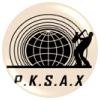by Paul Klemperer
Philosophically speaking, all art is fiction. And if fiction can be broadly defined as a creation of the imagination, then art, in all of its forms, can be related, both metaphorically and literally. We often use one art form to explain another, for example. Terms like “phrase,” “articulation,” “theme” and “voice” apply equally to both music and literature. So it is no stretch of the imagination to think of music as fiction.
We create fiction every day in order to construct and understand our lives. We present ourselves to others (and to ourselves) using the tools of socialization (speech, learned facial expressions, body language, fashion, etc.). In fact, there is a whole body of literature in the field of cognitive psychology dealing with the fictive character of the individual in society. (See, for example, Erik Erikson’s The Presentation Of Self In Everyday Life). We also edit reality in our minds, a matter of necessity since we can’t perceive and comprehend everything at all times. So fiction can be seen as the process of negotiating one’s individual place in a world teeming with stimulus and information. We select and shape experiences from the past, through memory; the present, through cognitive and sensory reaction; and the future, through our hopes, fears and dreams. We do it unconsciously for survival and sanity, but when we do it of our own volition and on our own terms it becomes art.
Playing and composing music, I feel an affinity with other art forms. The ideas expressed in the visual arts, literature and drama can inspire me or help me to refine my own musical constructions. For example, I often think about periods of social renaissance, in which artists in various media felt and reflected a shared aesthetic, sensibility or community. The fictions we create through our art, if they resonate with others, become part of a cumulative imagined community. In a renaissance period, inspiration becomes infectious. The muses hang out together, trading recipes.
But I also often connect music with fiction in the particular form of written prose. This has more to do with the form of prose construction than with creativity per se. While music has its own realm, its logic can be understood with terms from literature. I explain music to my students using terms like “grammar” and “vocabulary.” In some ways it is just an analogy, because you have to learn the elements of music as they are, within the sonic realm of music. But in other ways, the connections to written and spoken language are very clear. The length of a phrase, its shape, its rhythm, can be analyzed and understood just as we can break down a sentence into its component parts. You can train the ear to listen to a musical phrase critically, just as you can listen to spoken sentences. And one can learn to “hear” the music by reading it on the sheet, just as one learns to read books silently while mentally hearing the words.
One of the clearest connections between language and music is in song. Have you ever read song lyrics without knowing the melody? Usually they sound stilted and dry, if not completely ludicrous and lame. But then you hear them set to the melody, and they suddenly come to life. The best lyrics, of course, work as poetry on their own. But what strikes me is how much the music invests words with emotional impact. There are songs that literally bring tears to your eyes when you hear them. Sometimes this is the residue of sentimental memories, but there is undoubtedly an affective quality emanating from the words and music themselves, regardless of the personal experiences they invoke. This affective quality is a fiction: it is an artistic creation, and yet it has emotional power that is real to us.
And the fact that we know it is fiction, that we can critically examine its construction, makes it no less real.
[This essay was originally published in Austin Downtown Arts Magazine, January, 2002]

